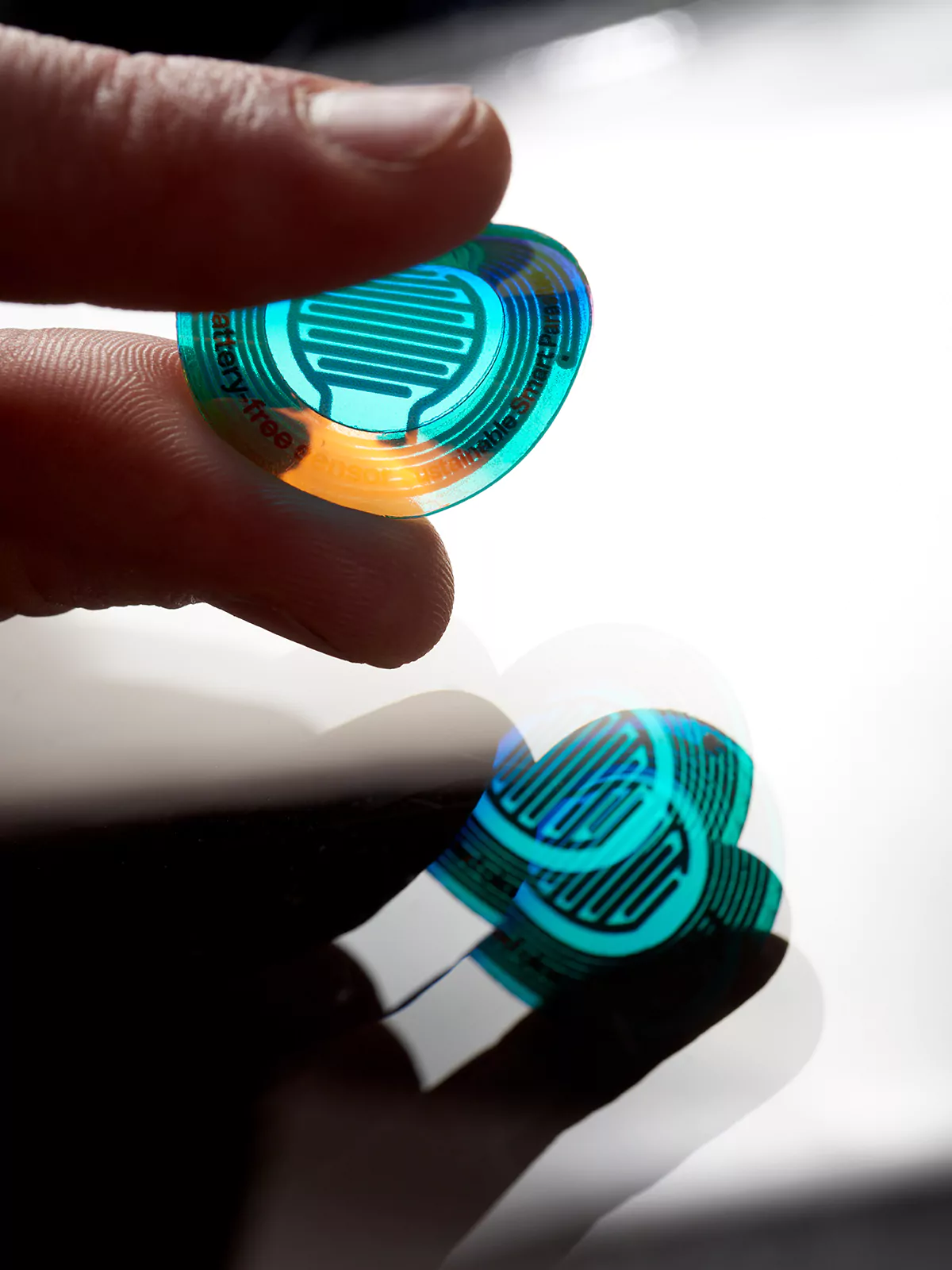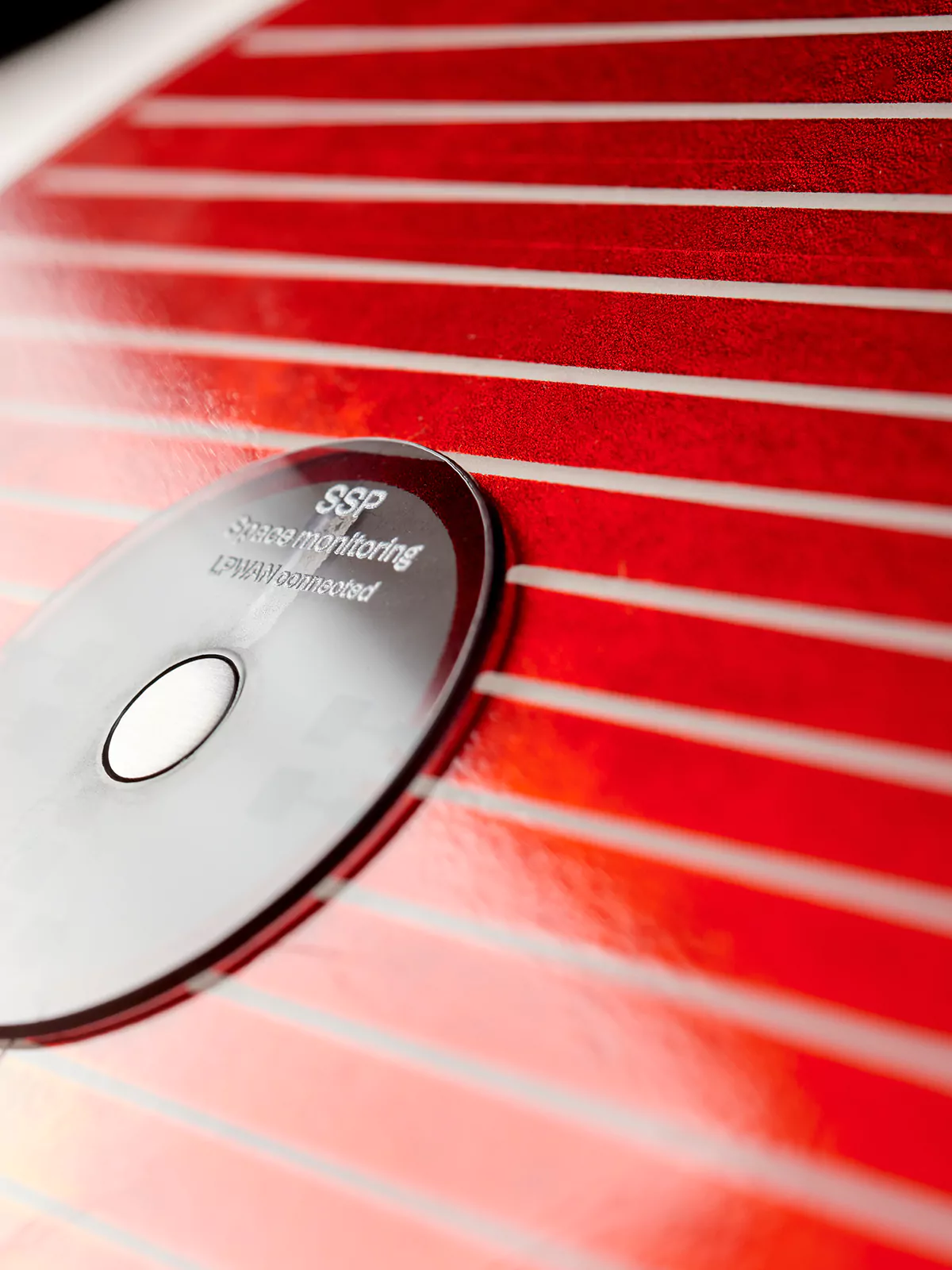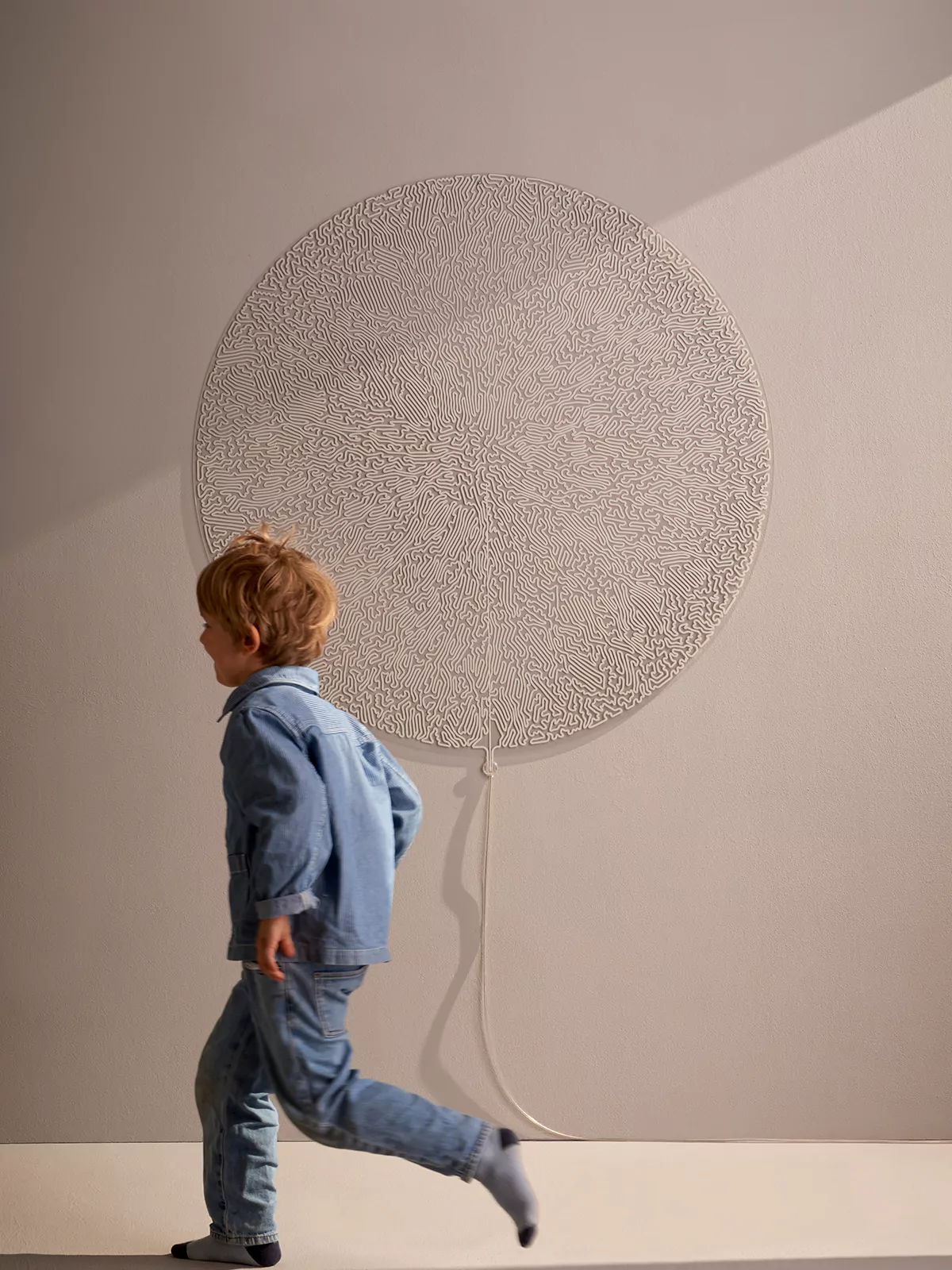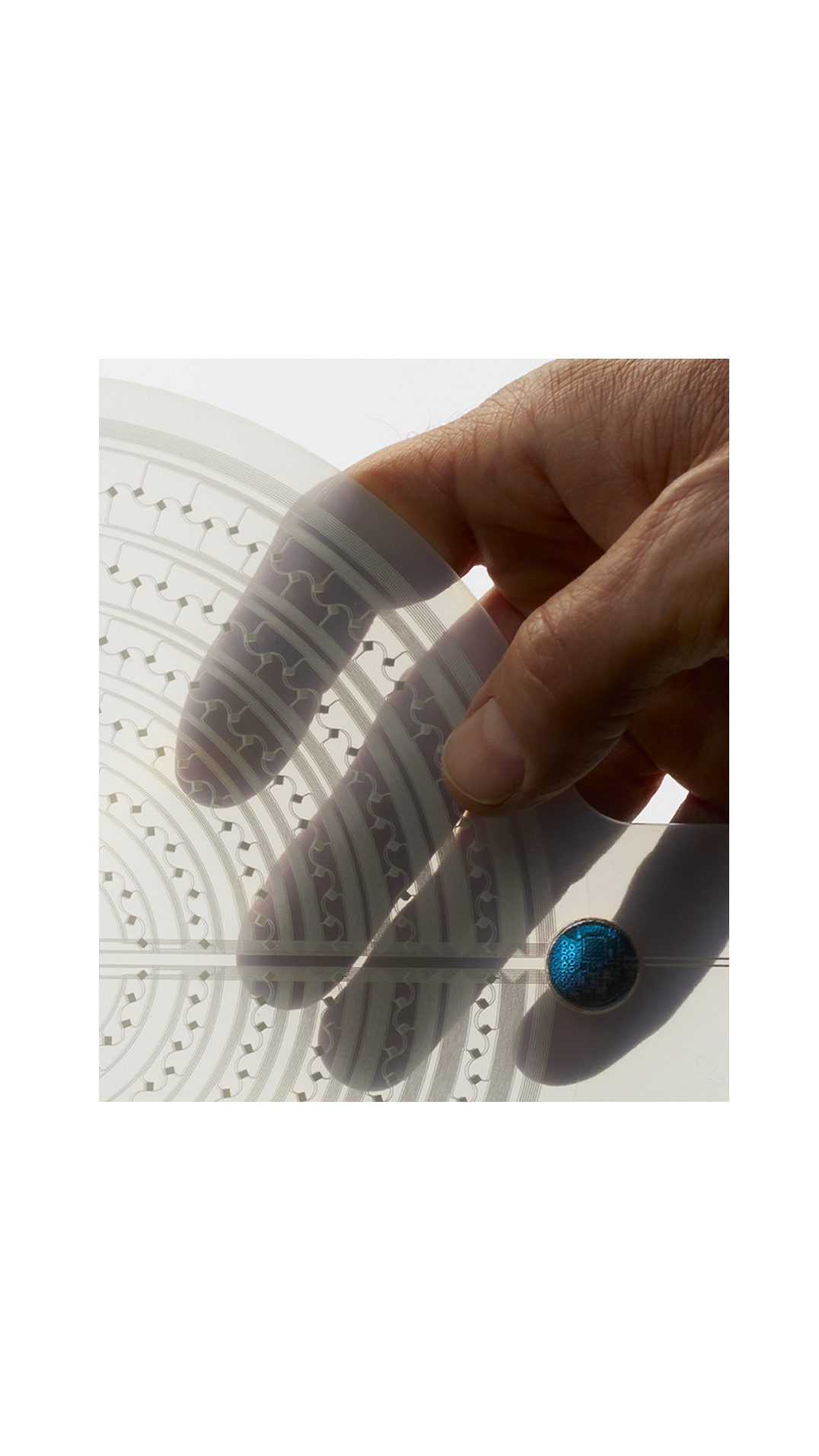Sustainable Smart Parasites (SSP) aims to create objects that extend our human capacity to connect with one another, in an energy-conscious way. Using printed electronics*, the project explores the benefits of the connected world we live in, without relying on the vast power outputs that it currently requires.
Envisioning the future of smart sustainable parasites – a new approach in the design of technology-enabled sustainable objects and systems.
Over the last decade, the idea of “connectivity” and its more profound implications popped up, bringing unprecedented opportunities to reinterpret the surrounding of modernity. Interconnected devices are redefining the interaction paradigms between human beings and their bodies, the object they own, and the space they belong to. However, the human body, traditional objects, and the space are not inherently interconnected and necessitate an “extension”, to enhance their functionalities. Since such extensions only have meaning and function when attached to the object they need to improve, they can also be defined as ‘parasites’.
→ Read more
The evolution of parasites into a different class of technology-enabled objects or smart parasites is inevitable. Still, it carries a series of criticalities which have not been entirely addressed so far by either industry or the scientific community. One of the most significant is related to sustainability. The SSP project challenges current perspectives of printed electronics and envisions and defines new functions, methods, and production tools for future Smart Parasites that are environmentally friendly, have a low carbon footprint for all its lifecycle and are energy conscious with low production costs. To pursue these ambitious goals, we exploit the recent advances in printed electronics and ad-hoc manufacturing to produce devices and concepts based on enhanced electronic functions. We are facing three ambitious goals by employing a design-driven approach, with a strong synergy between design and technology experts. First, we aim to obtain prototypes of sustainable smart parasites in the three categories: human body parasites, object parasites, and space parasites. Secondly, we will use the expertise and know-how gained through the project to create novel tools and equipment for the environmentally friendly fabrication of smart parasites. Finally, the research on structural and functional materials will lead to the definition of a database of materials, where the aesthetic and functional properties of the materials are classified and described. We believe that the successful actuation of this project will pave the way to an entirely new approach to the design of technology-enabled objects and sustainable systems.
An interdisciplinary research project
Free University of Bolzano
Faculty of Design and Art
Faculty of Science and Technology
Year
2018 – 2023
Team
Nitzan Cohen
Ignacio Merino
Prof. Paolo Lugli
Prof. Luisa Petti
Dr. Martina Aurora Costa Angeli
Dr. Mallikarjun Madagalam
Dr. Christian Ebner
Dr. Giuseppe Cantarella
Photography
Personal room sensors
What if you could monitor the air quality in a room by just swiping your phone?
In recent years, there has been an increasing interest in the development of personalized sensing technologies for indoor environments. In this regard, the emergence of personal room sensors has revolutionized the way we monitor and regulate atmospheric variables in enclosed spaces. By leveraging the latest advances in mobile technology and battery-free design, these sensors enable seamless, real-time monitoring of a wide range of indoor parameters.
With a simple gesture on a mobile phone, these innovative sensors can be activated to take on-demand measurements of key atmospheric variables, including temperature, humidity, and air quality. This is achieved through the integration of cutting-edge sensors and low-power wireless communication technologies, which enable reliable, high-quality data capture and transmission.
Use of room sensors
Notably, the battery-free design of these devices offers significant advantages over traditional sensor technologies. By eliminating the need for battery replacement or charging, personal room sensors can operate indefinitely, ensuring long-term and sustainable monitoring capabilities. Additionally, the compact form factor and wireless connectivity of these devices make them highly versatile and easily deployable in a variety of indoor environments.




These passive (battery-free) systems offer a high degree of freedom and are intended for daily personal use. The sensor lives autonomously, outside the spectrum of our battery-fed electrical devices, waiting for the user’s action to activate. The sensor can enable real-time reading of specific values such as carbon dioxide, oxygen (Co2, O2) or humidity levels.
Passive systems have emerged as a novel class of self-sustaining devices that exhibit remarkable advantages over their battery-powered counterparts. These systems are designed for daily personal use, providing a high degree of flexibility and independence to the user.




The sensors in passive systems are self-contained and function autonomously, operating outside the spectrum of battery-fed electrical devices. They remain in a low-power standby mode until triggered by the user, making them an efficient and reliable option for prolonged usage. The real-time measurement of specific values such as carbon dioxide, oxygen (CO2, O2), or humidity levels is an added advantage of passive systems.
These sensors can provide valuable insights into the environmental conditions, offering a non-invasive way to track the environment without requiring power-intensive devices. The remarkable combination of efficiency, convenience, and environmental monitoring capabilities has made passive systems an exciting field of research and innovation for scientific and engineering communities alike.




Exploded view of printed components
The room sensors could be used on an ad hoc basis or be installed in a fixed location. The printed space-monitoring sensors are highly adaptable to context and could revolutionise how we monitor and control our interior environments. Moreover, its outstanding cost efficiency and overall simplicity of production and use make it widely accessible.
The device takes the form of a foil or a sticker, on which a coil has been printed on one side of its carrying membrane. This device acts as an energy-receiving antenna and, together with a small RFID chip, as a communication system with a mobile phone.
The system’s base is a printed interdigitated conductor enriched with carbon nanotubes that acts as a sensor for all variables. The system retrieves and interprets data from different sources of our environment and behaviour.



The design featured here is a conceptual prototype based on real data, specifications, and application perspectives.






Off-grid sensor station
What if we had an off-the-grid space monitoring system that could be installed anywhere and communicate back with anyone?
The Space Sensor is an autonomous off-the-grid system for sensing, analysing and transmitting the atmospheric qualities of a specific space to a remote control centre located anywhere. The system has a passive sensor system, supported by printed organic solar panels and a low energy consumption communication system.
Space sensor station use.
The Space Sensor is an autonomous off-the-grid system for sensing, analysing and transmitting the atmospheric qualities of a specific space to a remote control centre located anywhere. The system has a passive sensor system, supported by printed organic solar panels and a low energy consumption communication system.



Exploded view of printed components
The LPWAN enables continuous data transfer with negligible energy consumption to the nearest telecommunication antenna. The energy-consuming action of processing and analysing the data happens at the remote control centre receiving the atmospheric data.
The system is independent of local, Wi-Fi or wired connections. This hybrid device combines concepts of resilience, energy storage, autonomous interconnection and printed electronics. Each device acts as an environmental data emitter, energy-autonomous and independent from any electric connection.
How does it work?
The device is autonomously harvested through a printed organic solar panel covering most of its top surface and combined with a printed sensitive layer of different interdigitated conductors enriched with carbon nanotubes which act as atmospheric sensors. The converted solar energy is transported to a lithium-oxide ceramic battery that powers the sensors and a low-power wide-area network (LPWAN) communication circuit.





The design featured here is a conceptual prototype based on real data, specifications, and application perspectives.





Soft-heater
What if we could reduce the generic overheating of spaces by using an adaptable and reactive system?
This soft and flat electric heater can be stuck onto nearly any surface or wall and used as a heat source for spaces, objects or the body. These easy-to-apply heaters look like posters or patches; the user can apply as many as necessary. This medium to large-scale application of printed electronics technology is intended as a supplementary heating source, allowing interior spaces to reduce their reliance on conventional heating.

Simulation of heating on the wall.
On a spatial level, the possibility to treat the heaters as easy-to-apply ‘patches’ positioned in direct relation to the current need and use of the space becomes a unique key factor with highly valuable implications. For example, the room would need less general heating as these ‘targeted’ heaters back it up.



Exploded view of components.
These are not seen as replacements for conventional heating but as complimentary aid which could enhance the overall heating efficiency in space, thus potentially allowing for lesser energy loss and emissions through the central heating systems.
This single-colour patch is made of a thermistor printed with conductive ink onto a heat-resistant Kapton substrate. The resistor is printed over the entire surface through a differential growth algorithm to maximise its area and changes colour as the device changes temperature.



Patches can be produced in any shape, and layers of different inks construct the interface, so no screens or light indicators are required. When not in use, the heating patch returns to its original colour.



Product heating print pattern.
The design featured here is a conceptual prototype based on real data, specifications, and application perspectives.
Manufacturing process of the printed cell.















Publications
Laser-Induced, Green and Biocompatible Paper-Based Devices for Circular Electronics
The growing usage and consumption of electronics-integrated items into the daily routine has raised concerns on the disposal and proper recycling of these components. Here, a fully sustainable and green technology for the fabrication of different electronics on fruit-waste derived paper substrate, is reported. The process relies on the carbonisation of the topmost surface of different cellulose-based substrates, derived from apple-, kiwi-, and grape-based processes, by a CO2 laser.
Cantarella G, Mallikarjun M, Merino SanchezFayos I, Ebner C, Ciocca M, Polo A, Ibba P, Bettotti P, Mukhtar A, Shkodra B, Inam AKMS, Pour Yazdan A, Paganini M, Tiziani R, Mimmo T, Cesco S, Münzenrieder N, Petti L, Cohen N, Lugli P.
Journal for Advanced Functional Materials / 2023
Fabrication and characterization of flexible planar electrodynamic loudspeakers. Conductive spirals are fabricated on a flexible and transparent polyethylene terephthalate substrate via screen printing. Different geometries (circular and rectangular) and sizes of the conductive spirals are investigated to understand their impact on the performance.
Madagalam M, La Torraca P, Ahmed M, Douaki A, Merino SanchezFayos I, Cohen N, Petti L, Lugli P.
Proceedings of the 6th IEEE Electron Devices Technology & Manufacturing Conference (EDTM) / 2022
Since its first discovery in 2014, laser-induced graphene (LIG) has gained increasingly attention as a simple and low-cost alternative to printing techniques, which instead require additional materials such as functional ink or adhesive layers. While there are several works on LIG supercapacitors, gas sensors, and triboelectric generators, this method is still very unexplored for antennas, especially if realized on eco-friendly paper substrates.
Ahmad M, Cantarella G, Costa Angeli M, Madagalam M, Ebner C, Ciocca M, Riaz R, Ibba P, Petrelli M, Merino I, Cohen N, Lugli P, Petti L.
Proceedings of the International Flexible Electronics Technology Conference (IFETC) / 2021
